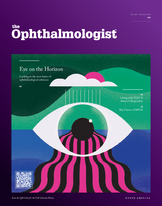What if I said that the size of the laser refractive surgery market could be multiplied fourfold in less than a decade? And that only those with foresight and adaptability will have a chance to grasp this opportunity?
Since the early 2000s, companies have introduced improvements to traditional LASIK, such as wavefront-guided procedures, femtosecond flaps and small incision lenticule extraction (SMILE). Results improved, complication rates declined, and today, LASIK is as safe and effective as ever. Consumers have, however, responded tepidly. Since the financial crisis of the late 2000s, volumes have not grown significantly. The primary target for laser refractive surgeons today is millennials (born 1980–2000). But despite the hopes placed on them to fuel a laser vision correction renaissance, procedure volumes have remained relatively flat since 2009 (1). Why is that? I think a key problem is that equipment manufacturers are optimizing procedures for only one market segment: people with refractive errors who dislike their glasses and contact lenses enough to opt for laser eye surgery. So far, EyeWorld estimates surgeons have performed 40 million LASIK procedures since 1991 (2). That might sound like a significant number, but considering just how many people worldwide have refractive errors it’s an exceedingly small penetration rate.
I think that a significant opportunity is appearing on the refractive horizon: presbyopic LASIK. And I believe that ‘Generation X-ers’ (born 1965–1979) and ‘baby boomers’ (born 1946–1964) are the sleeping giants of the refractive surgery market. Here’s why:
- The market size for presbyopic LASIK is much larger than that of regular LASIK. According to Statista (3), the population of millennials in the USA is estimated to be 72 million, with the population of Generation X-ers estimated at 66 million, and baby boomers at 74 million. But there are together 140 million Generation X and baby boomers – almost double the size. And when you consider that only half of millennials are likely to even need refractive surgery (around 36 million), and compare that with the numbers of people over 50 that have presbyopia (roughly 120 million), it is clear that the presbyopic opportunity is almost four times the size. Of course, as some of these elder Boomers will present with early signs of cataract they will be ideal candidates for refractive lens replacement. With that said, a significant percentage of them will require an enhancement to achieve ‘20-perfect’ vision.
- People aged over 40, especially emmetropes, are highly motivated to have vision correction treatment for presbyopia. It’s not difficult to understand why so many people who could benefit from laser eye surgery haven’t elected to do it. They’ve adapted to their glasses and contact lenses. But evidence exists in mice that age can limit neural adaptability (4), which may partly explain why some people over 40 experience difficulty adapting to reading glasses. Though I have yet to find specific evidence supporting this claim, it follows that people tend to exhibit more motivation to address a problem they have trouble adapting to versus a problem they adapted to when they may have been cut ‘were’ more neurologically flexible and plastic (0 to 25 years of age).
- The presbyopic market has the spending power. Business Insider reports: “Millennials, are spending less on consumer goods because of expensive healthcare and education costs. But baby boomers, are the ‘biggest spenders’ because they have extra cash from decades of saving and investing” (5).
The take home message? Generation X-ers and baby boomers have the size, the motivation and the spending power to potentially quadruple the laser eye surgery market. In my view, presbyopic LASIK is likely to be the most significant opportunity on the refractive horizon for the next 30 plus years. Growth-minded refractive surgeons should look to new technologies and adapt their marketing strategies for when the sleeping giants awaken.
Financial disclosure: Solar reports that he is a Consultant for Carl Zeiss Meditec.
- Statista. “Number of LASIK surgeries in Europe from 2004 to 2020 (in thousands)”. Available at: bit.ly/EuLASIK. Accessed: July 31, 2018.
- Ellen Stodola. “LASIK worldwide”. Available at: bit.ly/LASIkworld. Accessed: August 15, 2018.
- Statista. “Resident population in the United States in 2017, by generation (in millions)”. Available at: bit.ly/StatsUSPop. Accessed: July 31, 2018.
- M Matamales et al., “Aging-related dysfunction of striatal cholinergic interneurons produces conflict in action selection”, Neuron, 90, 362–373 (2016). PMID: 27100198.
- Ashley Lutz. “Baby Boomers are the sexiest consumers in retail”. Available at: bit.ly/mktBusIn. Accessed: July 31, 2018.
Rod Solar is Director of Practice Development at LiveseySolar, London, UK and a Scalable Business Advisor













